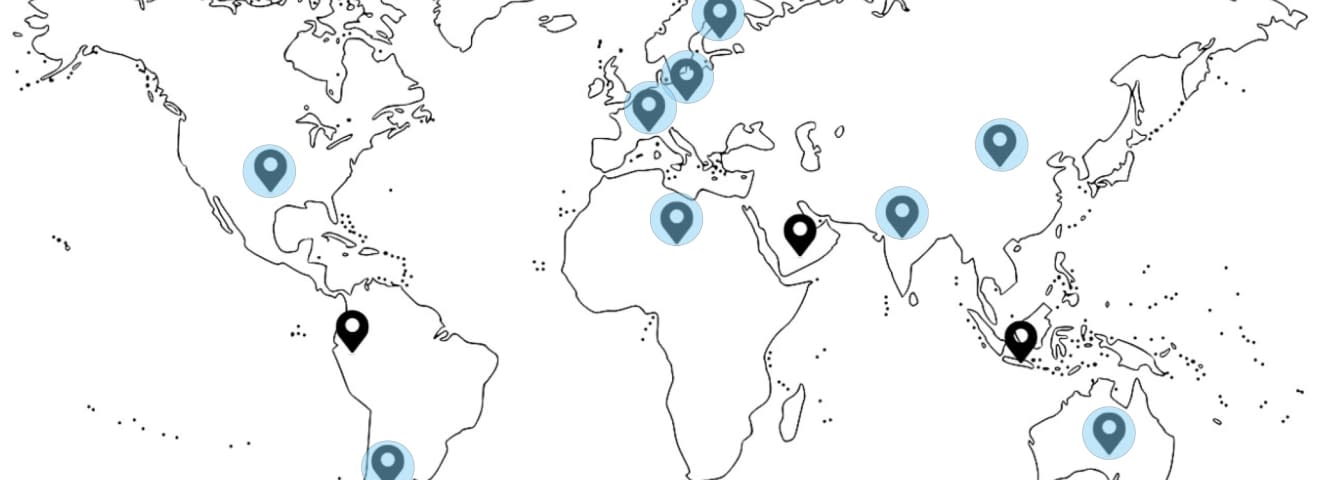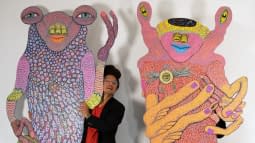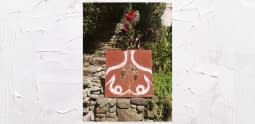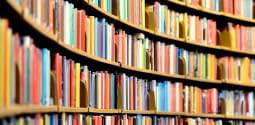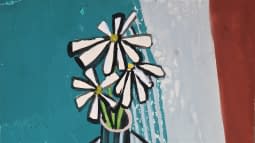The Encounter with Art: ART & INTERCULTURALITY - The creative dialogue between cultures by Cris (PART I)
Following the reflections of the German poet and playwright Johann Wolfgang von Goethe:
Art is a serious business, which reaches its highest heights of seriousness when it deals with noble and sacred subjects. The artist, however, is above art and above the subject; above the former because he uses it for his own ends, and above the latter because he treats it in his own way. (J.W. von Goethe, “Maximen und Reflexionen”, 1833. Postum Edition, 2021, p. 31).
There is an intrinsic connection between art and interculturality that becomes evident when studying the history of civilizations, since through the artistic manifestations of societies, such as painting, music, architecture, dance, literature and sculpture, cultural communities can share and communicate their histories, values, ideas, traditions and their own ways of seeing the world. Art helps to build society; it is part of its identity. Human beings find themselves and know others through artistic expressions. In this sense, different cultures have their own voices, neither better nor worse, only unique.
These voices develop a creative dialogue that survives the passage of time and transcends geographical distances, connecting the artist with the observer, and the observer with the artist. Art transmits culture, culture creates art. At last, the voices of cultures are expressed by linking with other cultures, and thus in an intercultural dialogue learn new ways of understanding reality, different ways of inhabiting the world and different ways to manifest it.
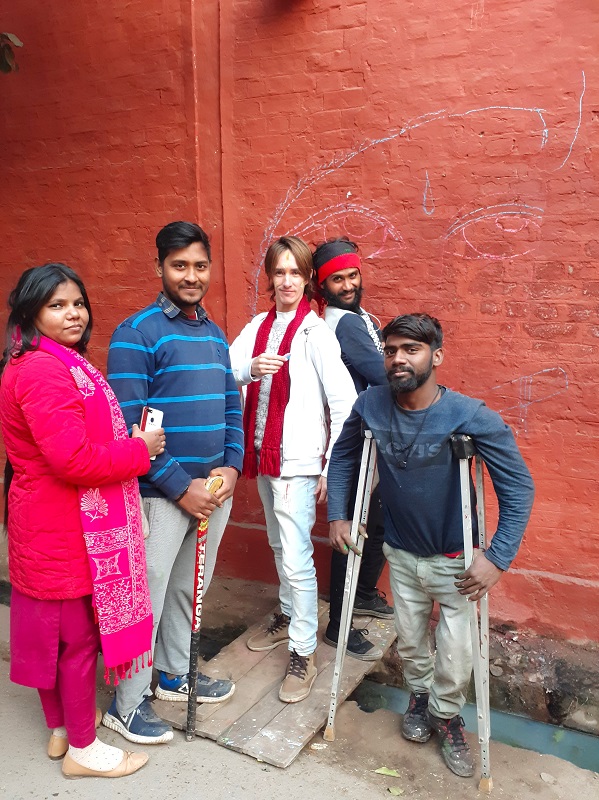
Fig. 1: : Ravi Kumar, The Dessiner Artist Group & Cris painting a mural on the streets of Vrindaban, India. Photo Credit: ©CRIS / January, 2020
When asked what the relationship between art and interculturality was, the Artificial Intelligence ChatGPT responded:
The relationship between art and interculturality is a complex issue that involves multiple disciplines and challenges. From an interdisciplinary and identity-building perspective, this relationship becomes even more interesting. Here are some key aspects to consider: Cultural Expression, Encounter of Cultures, Identity Reflection, Challenging Stereotypes, Interdisciplinary Education, Social Transformation. In short, the relationship between art and interculturality is rich and multifaceted. Art plays an essential role in promoting understanding, cultural diversity and identity building, and benefits from an interdisciplinary perspective that addresses these issues holistically. (ChatGPT, 2023).
In a world increasingly mediated by technology, listening to the voice of AI can be a complement to the artists' work, or at least a provocation that awakens new ways of linking people with technology and new creations. It is important to remember that culture and art are, and were essentially, a sophisticated form of technology used by the different peoples of humanity to transmit manifold knowledge, wisdom and understanding of the universe and the human being.
Understanding the importance of art in today's world and its influence on history as an engine of change in societies, it is essential to finally ask the question: Is art a potential way towards a world free of war?
Now, it's time to hear the voices of artists around the world! 9 artists from 5 continents in an article divided into 2 parts!
ARTISTS PART I:
• Ravi Kumar (India), Juan Tardivo (Germany), Tingyi Maria Huang (United States), Mata Kamaleshwari Thuley (Australia) and Hakim Altlis (Libia).
ARTISTS PART II:
• Ketut Murtayasa (Indonesia), Madeleine Farhounmand (Switzerland), Monica Sarmiento Archer (United States) and Cris (Switzerland).
Ravi Kumar from India
1. What does art mean to you?
Just as the identity of any artist is his art, similarly my identity is my art, my art is my existence, I can express my thoughts to the whole world only through my art. I love art and artist.
2. What is the link that exists between your art and the culture of your country of birth, region in which you currently live or your continent of origin?
Art plays an important role in the development of any country. It reflects shared visions, values, practices and a definite goal. Culture and creativity are included in all economic, social and other activities. A land of diversity, India is known for its various cultures. India has a huge collection in the fields of songs, music, dance, drama, folk traditions, performing arts, religious rites and rituals, painting and writing, which is known as 'intangible cultural heritage' of humanity. For their conservation, the Ministry of Culture has implemented various programs and schemes whose objective is to provide financial assistance to individuals, groups and cultural institutions active in the field of performing arts, philosophy and literature.
3. What does art contribute to the society of your current country?
The artist creates only after making a connection with the external world's appearance, activities and feelings of the society. In his creation, he has a direct relation between social feelings and human instincts. These feelings are expressed in artistic creation, as a result the form of art is also universal. The talent of the artist, his self-power and his artistic elements, by adding harmony with the form and feelings of the society in the form of art, give it a comprehensive form. Most of the subjects of art are the problems of the contemporary society, personality takes a secondary form in the creation done for this purpose and the reflection of the needs of the society is clearly visible in its creation. In such a situation, the artist wants to achieve inner peace through objective expression. In this situation, one chooses his own path to achieve his objective, but can never remain separate from the society. But the goal of the viewer's enjoyment and self-power remains before technical principles. On the basis of theory, in the first situation, the form of art created is pure and original and in the second situation, the form of art becomes practical and originality goes away from it to achieve the goal. As a result, many techniques have to be adopted and presented in the form of crafts.
4. Why do you make art and what inspires you?
Art (Drawing & Painting) is a visual expression used to express your own thoughts and feelings towards a subject.
5. Some words about art and interculturality that you would like to share.
Art impacts society by changing people's minds, setting ideals, and transmitting experiences across time and distance. According to studies, art affects the basic emotions of a person.
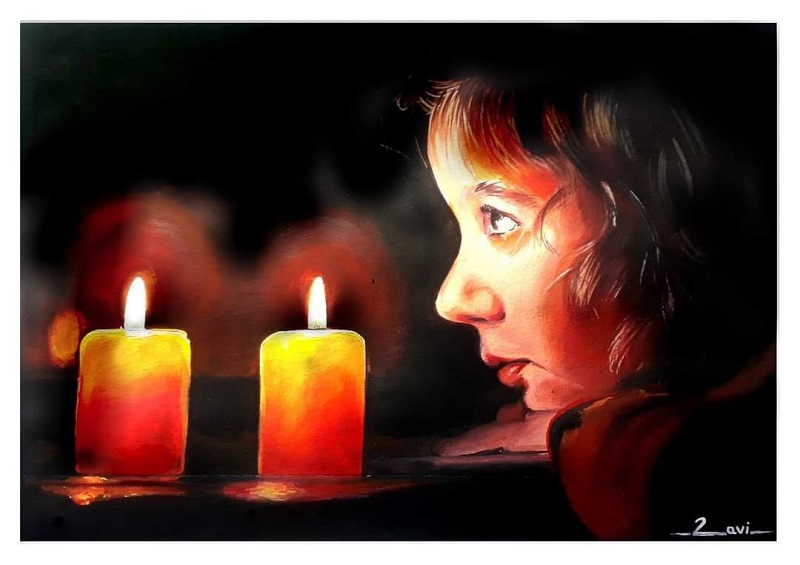
Title: “Peace”
Technique: Poster Colour
Size: 21 x 29.7 cm.
By Ravi Kumar
Aligarh U.P., India, Asia
Juan Tardivo from Germany
1. What does art mean to you?
Art for me is two things, on the one hand it is a tool of communication and an open dialogue with the other, it allows us a direct exchange of ideas and knowledge of cultural diversity and how it can be represented. On the other hand, Art is also a means of expression that allows us self-knowledge and internal reflection in search of the idea of being, a philosophical/spiritual meditation that helps us “untangle” our thoughts to be able to see the world in a different way the “clearest".
2. What is the link that exists between your art and the culture of your country of birth, region in which you currently live or your continent of origin?
I consider myself a transcultural artist, because I do not belong to any specific place, but rather I am immersed in the reality and complexity of the current world, without leaving aside the inner search. In the representation and artistic search that I carry out, it is quite difficult to determine any belonging linked to my country of origin (Argentina) or to my country where I currently live (Germany). Although my artistic training took place initially in Argentina and later in Italy, it does not strictly represent either country, but rather a hybrid between colour and image where features of Latin American culture can be found aswell as European, but that belong to the general imagination of western culture. Art as a migratory tool.
3. What does art contribute to the society of your current country?
Every art and every artist contributes something to society, as does each individual in their daily actions. The human being is the one who creates and carries out the community and this is in turn modified by each individual. I believe that my art provides a look, an exchange, a representation, a way of conceiving and creating, a possibility of search, where the other can feel mirrored, understood and respected. It tries to be a caress to those who are distressed or lonely – social and at the same time a criticism of the precepts that it imposes on us, a small personal speech that tries to be universal in the subject to work on the individual.
4. Why do you make art and what inspires you?
Artistic/intellectual realization is the only one of the things that I see possible to do in pursuit of knowing and knowing myself, a personal psychoanalysis that seeks self-determination and understanding my existence in this reality. Every time I face a canvas or a blank page, I know that this is a part of the path I have to go through to go deeper in this search, a meditation on creative action. I also believe that I make art because it is my way to communicate, to be able to have a dialogue with someone I don't know, the expressive capacity that I can represent is much more interesting or profound than what I can say with words in a "normal" communication, since I am not a person who is easily talk to others, so I find in art a possible communication between my exterior and interior.
5. Some words about art and interculturality that you would like to share.
Art is the ability that human beings have to express ourselves and to seek a joint idea of the world, where we can configure a new social reality. Every time we meet, that we move, even in small daily actions, we could think of the exchange from art, a generous exchange with the other that helps us form a great community that finds in dialogue and expression a way to face the differences and problems that happen to us daily. The importance of interculturality is this exchange necessary for joint growth, because in this is found the virtue of overcoming the dogmas that we impose on ourselves as a separated society, knowing and understanding the other leads us to understand and know ourselves in the depths of our individuality.
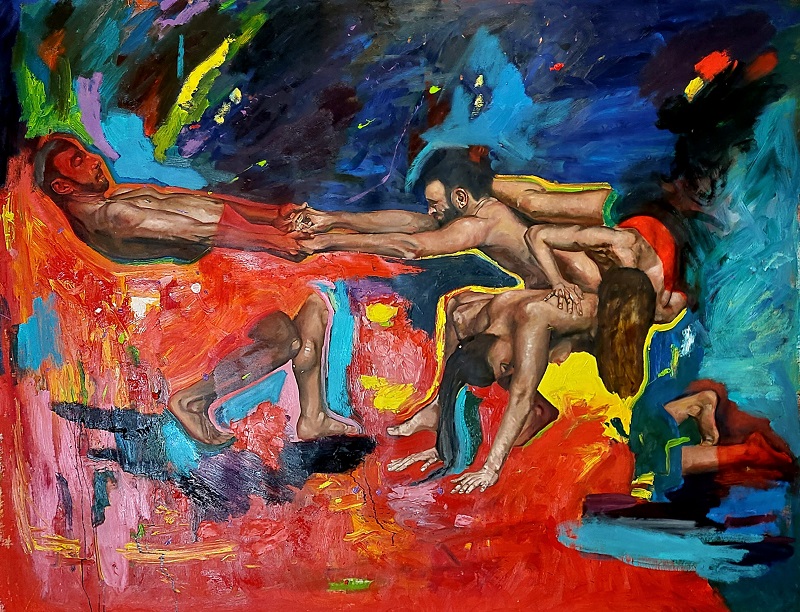
Title: “Come out into the ligth”
Technique: Oil on canvas.
Size: 200 x 160 cm.
By Juan Tardivo
Munich, Germany, Europe
Tingyi Maria Huang from the United States
1. What does art mean to you?
Art, to me, is the luminous essence of life.
2. What is the link that exists between your art and the culture of your country of birth, region in which you currently live or your continent of origin?
My art is deeply intertwined with the cultural fabric of my homeland, China, as well as the places I have lived in Europe and currently in the US. I draw inspiration from their historical narratives, architectural wonders, and unique social nuances.
3. What does art contribute to the society of your current country?
Through my art, here in United States where I live, I aspire to nurture kindness, humility, and peace among individuals and society.
4. Why do you make art and what inspires you?
The diverse rhythms of various art forms touch the depths of my soul, compelling me to create. I am driven by the desire to share the profound emotions these forms evoke with those I hold dear.
5. Some words about art and interculturality that you would like to share.
The loftier the ideals, the purer the life; the more sincere the emotions, the more artistic the language.
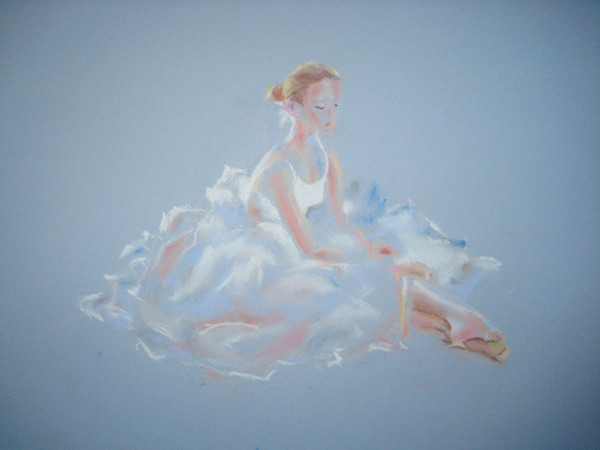
Title: “Blank”
Technique: Pastel
Size: 34 x 43 cm.
Princeton, New Jersey, United States, America
Mata Kamaleshwari Thuley from Australia
1. What does art mean to you?
It is the breath of life. It is purpose. It is richness and depth and deeply private parts of me revealed to the viewer. Art is the way consciousness wishes to express itself through me in this lifetime. It is my soul outpouring and also my therapy. I believe works from a place of being are visual sutras. Aging and a long difficult road to being able to be an artist have taught me to not worry about much else other than divine expression and celebration of the creative process.
2. What is the link that exists between your art and the culture of your country of birth, region in which you currently live or your continent of origin?
I was born in Stockholm Sweden and spent my childhood mostly as an expat in Scandinavia, the USA and Asia. It impacted me a lot, the love of folk art from Sweden and the local Asian tribal fabric designs or Chinese ink art and designs all gave me a love of culture and colour. Moving to Australia and having an incredibly vibrant and healthy lifestyle here has helped with freedom of expression and love of the vibrant pristine landscape here. Her colours inspire me to use Australian colour palettes. Mind you, Australia can be not so supportive of artists and my family wouldn’t allow me to pursue it as a career. I had to do it all as an adult.
3. What does art contribute to the society of your current country?
Art in Australia seems to be mostly political at the moment and always trying to make a point. I look forward to it not always having to be that way. We have a strong unique Indigenous art scene here that also has influenced my work by the stories and symbols we learned growing up. I love how artists in Australia are embracing the ability to be their own boss and be more entrepreneurial with their work and business. This is exciting. We seem to be embracing popular and decorative art not just on walls but also clothes, homewares, etc.
4. Why do you make art and what inspires you?
Because that is what artists are made for. We create. We are sensitive, intuitive, attentive. We see and feel and notice things in a way that is important to capturing society as it is. There is little choice if we wish to live a healthy and fulfilled life and believe me, I know from having long periods of time not able to paint, but never not creating through some avenue. Whatever an artist does is art. I am eclectic and love life and art reflects this for me. I also love anything from the work of Swedish painter Carl Larsson, Norwegian Edvard Munch, the street art of Mexico and Brazil, Indian religious art, Japanese Zen art and gorgeous edgy urban graphic design to beautifully illustrated children’s books. I adore the symbolists. I love it all but mostly what comes from imagination rather than reality.
5. Some words about art and interculturality that you would like to share.
Compassion. Insight. Education. Empathy. Joy. Celebration. Respect. Vibrancy. Humanity. Puja. Expression. Unity. Freedom. Stories. Expansion. Connection. Giving. Sharing. Extra. Colour. Contribution.
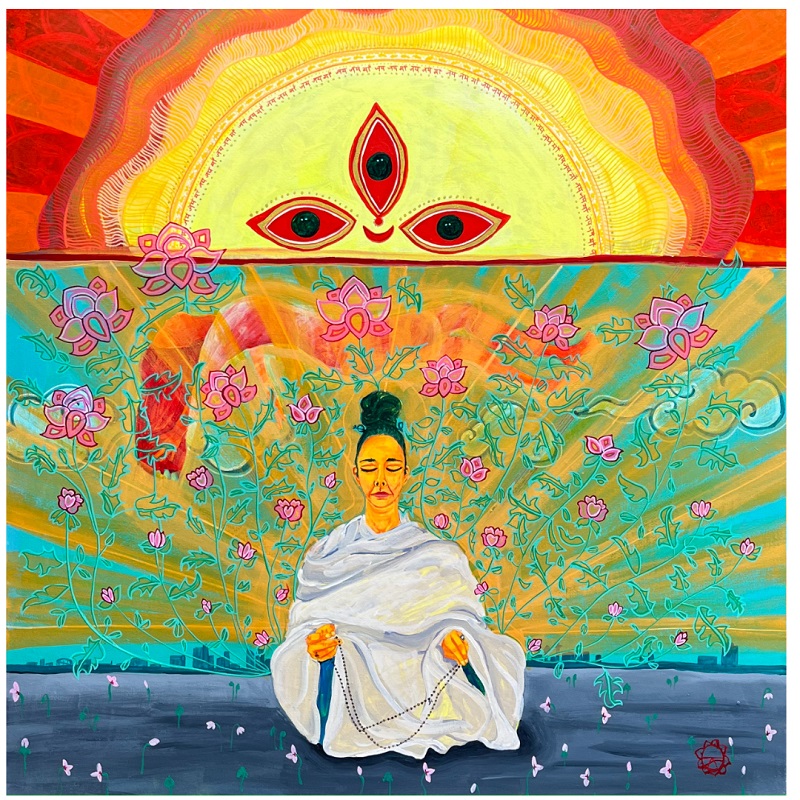
Title: “Jivan Mukti”
Technique: Mixed media on canvas.
Size: 101.6 x 101.6 cm.
Melbourne, Australia, Oceania
Hakim Altlis from Libya
1. What does art mean to you?
For me, art is my way of seeing the world, art is my tool for communication and expression. In short and clearly, art is life.
2. What is the link that exists between your art and the culture of your country of birth, region in which you currently live or your continent of origin?
Considering that art is an identity, and that a person is a reflection of his experiences and environment, it’s natural that his art reflects his culture, whether consciously or unconsciously. I see that art is a reflection of the reality I live in. I currently live in Tripoli, Libya, on the African continent.
3. What does art contribute to the society of your current country?
Art contributes to highlighting humanitarian and social issues, art is also considered a form of documentation, and since I come from an unstable country, I consider it my duty to document what I see and convey it in my work.
4. Why do you make art and what inspires you?
I practice art because I believe that my way of seeing things is worth seeing. As for what inspires me, everything in life here is a source of inspiration.
5. Some words about art and interculturality that you would like to share.
I use one of the oldest mediums of art to express and explore short stories that illustrate the pain, suffering and political/ social problems that my country and my region refaced during its instability. My sketches are untitled so that they do not obscure the viewer's perception of the illustration.
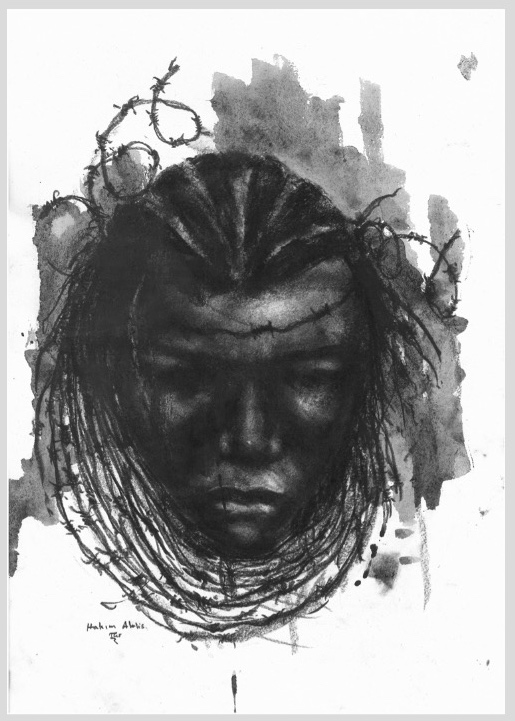
Title: “Untitle”
Technique: Charcoal on paper.
Size: 101.6 x 101.6 cm.
By Hakim Altlis
Tripoli, Libia, Africa
SOME CONNECTIONS, MANY VOICES, NEW IDEAS
Answering these 5 questions as an artist who was born in Latin America, in Argentina, and after having traveled to more than 58 countries: researching, working, experimenting and getting to know different cultures, and who currently lives in Switzerland, I could summarize it as follows:
The artistic, literary and academic creations of my professional work seek to understand, explore and express wonder at the various spheres of human existence and its relationship with nature, culture and the universe.
Colour, words and shapes merge to invite the viewer to investigate the themes that run through the life of the planet's societies and cultures. Art manifesting ideas, concepts and making deep realities visible: beings, migration, climate change, artificial intelligence, society, existence, peace, science, biodiversity, war and interculturality.
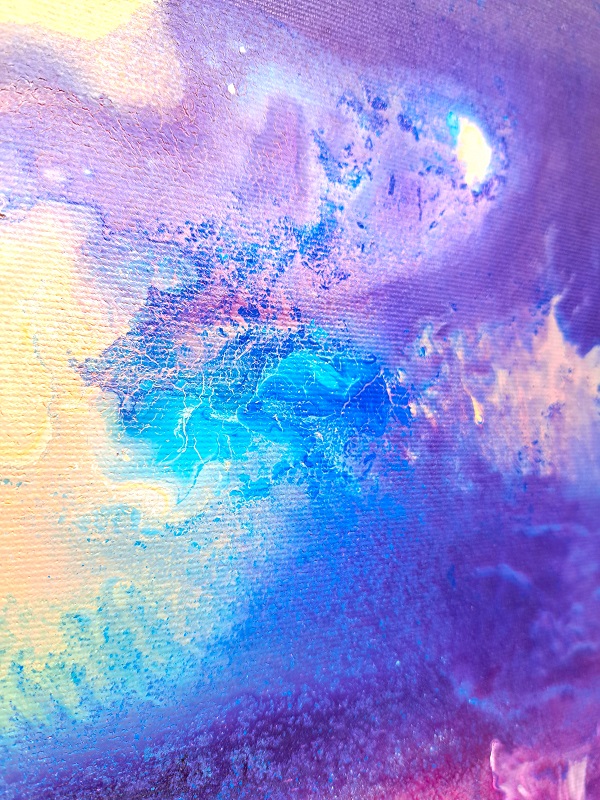
Title:“Being”
Technique: Acrylic on canvas.
Size: 120 x 80 cm.
By Cris
Bern, Switzerland
This research gives us the opportunity to listen to the voices of different artists, who inhabit different regions of the world and manifest various cultural ways of living on earth in their art. Art as a means and as an end in itself, interculturality as a door to dialogue with ourselves and with others. By listening to others, perhaps we can also listen to our own voice and hear it from the art and culture that lives within us.
Art is a way to peaceful coexistence between cultures, art is a catalyst for social conflicts, art is a path to a world without wars. By listening to their searches, their stories and contemplating their art, we learn new ways to approach diverse cultures and people.
In their freedom of expression, new worlds are discovered. Returning to Goethe's words:
"In every artist there beats a germ of daring without which no talent is conceivable and which is particularly activated when attempts are made to limit the talented man and to hire and use him for overly simplistic purposes." (J.W. von Goethe, “Maximen und Reflexionen”, 1833. Postum Edition, 2021, p. 32)
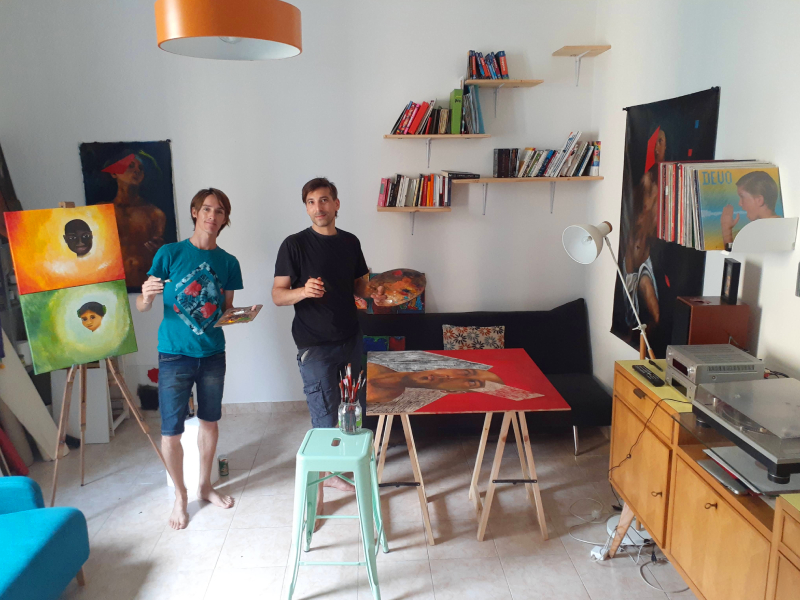
Fig. 2: Juan Tardivo & Cris at the Art-Studio in Bologna, Italy. Photo Credit: ©CRIS / August, 2019.
Thanks to their daring and diverse voices, their art full of colours, textures and varied nuances we found the search a common for knowledge, beauty and communication. Faced with the challenges that art presents to artists around the world, human beings see in art expressions of themselves and a mirror in which they can see their inner selves and the world around them reflected.
Art allows us to see beyond social, cultural or historical differences. We are equal and at the same time diverse human beings. All of us have a story to tell, a picture to paint or a culture to preserve. In times of artificial intelligence, climate crisis and wars, art and artists are that voice that helps us understand, question and investigate the wonderful mystery of human existence.
By Cris
Immigration and Intercultural Mediation Specialist
Bachelor of International Relations
Writer and Artist
In the second part of the article, "Art & Interculturality: The creative dialogue between cultures - PART II", we will hear new voices from artists on the same questions. In part 2 you will learn what conclusions can be drawn from the different perspectives on the relationship between art, interculturality and artists from different parts of the world.
BIBLIOGRAPHY AND SOURCES
• J.W. von Goethe (1883). “Máximas y Reflexiones”. Postum Edition, 2021. Madrid España. ISBN: 978-84-350-9169-5.
• ChatGPT (2023)
